|
I once dove down in front of my mother's moving car to pick up a button that had fallen off of my bag. My mother was angry because she could have run me over, I was angry because she definitely would have run my button over. So, clearly, I have a bit of a thing for buttons. This, of course, has made the resurgence of pinback buttons and enamel pins a big win for me and my desire to hoard shiny objects like the scaly, reptilian behemoth that I know I truly am. The problem is, I'm also an obsessive organizer, especially when it comes to displays around my house. I've tried displaying pins on my office bulletin board, but the end result was too chaotic for my tastes. I've tried storing them in my jewelry box, but I rarely wear the pins, and most of them I'd like to have out and visible. There's also the issue of displaying buttons and pins when I'm selling my own designs-- scattering them around the table is a recipe for lost merchandise and low sales, but since pinback buttons attach only to fabric or pre-punched paper, we're again left with few options. This led me to seek out a way to combine the display power of the cork board with the flexibility of a fabric banner, and to the creation of these: Yes, I invented the picture frame. Well, reinvented it. You see, I can only read so many DIY posts about gluing cork into a shadow box before I have to bastardize it into something prettier and more functional (besides, I can buy a framed piece of cork, it's called a bulletin board, and as I mentioned previously, it didn't really suit my pinback button needs). After figuring out what I needed to do, it took maybe five minutes to throw these together, and now my buttons, pins, and even stickers are happily housed and displayed. If you'd like to recreate my "invention," you'll need: Take apart the picture frame, set the backing and insert aside for later, and removing the glass (pro tip: those pieces of glass make fantastic palettes for watercolors or acrylic paint, so hold onto them if that's something you're interested in). If the frame comes with a kraft card stock or thin cardboard insert, congrats, you don't have to cut down your own card stock! If it comes with no insert, a thick cardboard insert, or one of those flimsy fake photos, you'll have to do a bit more work, but only just barely. Make sure that the cardboard or card stock you're using is sturdy, but thin. Place the insert or frame backing on top of your piece of kraft card stock or thin cardboard and trace around it, then cut the card stock so it fits into the frame like a photo (i.e., if the frame fits a 4"x6" photo, your card stock should now be 4"x6"). Now for the felt! You can use any color you like, but I chose black and turquoise, to the surprise of absolutely no one. Lay your cardstock on top of the felt and trace around it, but with about a half an inch of extra space on each side (if your cardstock is 4" wide, your felt will be about 5" wide, and etc.) Cut the felt out along this line (it doesn't have to be exact, there's a reason we don't need a ruler for this!) Lay the cardstock back down in the center of the cut out felt, so that it's framed. You're now going to make marks from the corner of the cardstock out, so that you have a little square in each corner. Cut out these little corner squares and discard them (or reuse them in another craft!), so that you now have a big ol' felt plus sign/cross/lowercase t. Keep your card stock centered, and pull out the glue gun, we're almost done! Make a line of hot glue along the top edge of the card stock, and wrap the edge of the felt over the glue, like you're wrapping a present. Continue this on each side, until you have a fully wrapped piece of card stock. Take your time and make sure you've wrap the card stock tightly enough that there's no bulging felt, but not so tight that the card stock is bending. As you fold, press the felt down against the card stock with your hands and sandwich the glue to ensure it has fully adhered to both the card stock and the felt. It's the final step! Once the glue is dried and cool, place the felt-wrapped card stock into the photo frame just like you would with a picture. If you're planning to only display pinback buttons, replace the frame backing and lock it back into place. If you're displaying lapel pin-style pins as well, wait until after you've pinned them in to replace the backing, otherwise you may break or bend the pin. If you give this DIY a try, leave a comment below with a picture of your finished product, and tell me about your pin collection!!
1 Comment
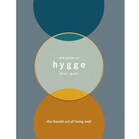 Though perhaps not explicitly a book on organization, The Book of Hygge is an excellent companion to any literature on decluttering and organizing, in that it provides a sort of verbal vision board to inspire the more well-rounded and inviting space your home can become when it is not piled high with clutter. Thomsen Brits can get a bit pedantic; what is accomplished in 192 pages could likely be accomplished in 50. But the spirit of the book, a manual to creating a feeling of contentment in your space and your life, is a great reminder of what a home should be. Not a warehouse to store your accumulated clutter, but a shelter to provide warmth and comfort. Even a quick skim can inspire you to arrange the items you have elected to keep after decluttering and organizing in a way that promotes wellness and joy, and that inspiration is an excellent motivator to continue your organizing journey. 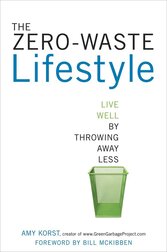 Just in time for Earth Day, take the plunge into zero- or low-waste living with Amy Korst's incredibly comprehensive guide to reducing your trash and improving your life. In The Zero-Waste Lifestyle Korst quickly dispels the initial fears one may have when approaching zero-waste living: complexity, cost, and perfectionism. Instead of focusing on those gatekeeping elements, Korst's approach to zero-waste living is all about simplifying your life, saving you money, allowing room for error, and taking care of the environment all in simple congruity. Lifestyle quickly touches upon the issues of modern throwaway-culture; the side effects of rapidly producing and disposing of goods are almost innumerable, but not so extensively detailed that the reader becomes fatigued before arriving at solutions to these problems. Korst does not preach. Nor does she demand immediate and perfect zero-waste living. Rather, The Zero-Waste Lifestyle serves as the ultimate beginner resource for greener living, pairing concepts with incredibly specific plans and resources for plotting out and executing a more environmentally-friendly lifestyle. If the thought of composting overwhelms you, Korst provides three levels of intensity to ease you into reducing food waste. If switching from convenience foods to bulk sounds impossible, Korst has charts and lists that will take you along step-by-step. In our journeys to organize and declutter, it's important to remember we are not only responsible for caring for the house we live in, but the planet we live on. Reducing the trash cluttering up your home is just as important as reducing the trash cluttering the planet, and the two lifestyles can go hand-in-hand when you begin living with less waste. Decluttering must at first glance seem like the enemy of environmentalism, and zero-waste lifestyles the enemy of minimalism. How can you claim to care about the earth when you’re throwing out dozens upon dozens of bags of what once sat in your home, away from fragile wilderness? And how could a box of stainless steel straws be a smaller source of clutter than a single throwaway straw from a fast food restaurant? The key lies in your intentions and how they develop as you go through your journey of organization.
When you declutter your home, you should not just be blindly sending things off to landfills. Not only is this incredibly wasteful, it makes it far harder to part with items that you see as still being useful or valuable. How much better do you feel knowing your old desk may be going to an underprivileged teenager studying for their SATs? How much lighter do you feel when you know your clothing donations will generate revenue for good causes? Now, think a step further. Donate with the intention not only of providing goods or money to those in need, but with the intention of making the production of new goods (and therefore the associated waste of production and pollution) unnecessary. This makes your decluttering a threefold benefit, to yourself, to the future owners of your unwanted and unneeded clutter, and to the environment. Overproduction of goods was a primary factor in the development of our consumer culture. When posed with the option of either producing less or selling more, industrialists chose to sell more. To create the increased demand for their goods, their products had to become disposable, either in function or fashion (to learn more about how overproduction led to our modern throwaway culture, pick up Stuffocation by James Wallman). This development of throwaway culture is tied intrinsically to materialism and, therefore, clutter. But, how could a stockpile of reusable goods take up less space than an item you use and then immediately discard? Wouldn’t a set of travel utensils, a drawer of canvas bags, a box of stainless steel straws, and a cabinet of glass jars and canisters require more space (and money) than accepting and then discarding the free packaging that is already provided with almost any purchase we make? And how strange must it look to go to a fast food restaurant and provide them with a Tupperware you brought from home? What sane person whips out their own spork in a cafeteria? Let’s tackle the issue of embarrassment first, as it requires the shortest solution: would you rather be slightly uncomfortable the first few times you bring a reusable thermos to Starbucks (for which you will likely receive a small discount) or be responsible for the constant stream of trash coming into your life and back out into the environment? Now on to the topic of space. There is almost no home in America that is without a bag full of other plastic bags. Replace that with a collapsible set of canvas totes and your bursting drawer of flimsy, torn up plastic bags is gone. And what about the reusable containers, the jars, the canisters, the Tupperware? Chances are, whether or not you bring containers to salad bars and bulk aisles, you already have food storage. These may be matching glass sets from a high-end store, ceramic hand-me-downs from your grandparents, or plastic containers leftover from nights of takeout past. Why not use these, save money by buying your pastas, nuts, grains, etc. from the bulk aisle, and save yourself the pain of redundant packaging, why have the box of pasta in one cabinet and a container of the same size in another cabinet? And think of the beautiful shampoo bars and solid deodorants that take up less space as you use them, and whose packaging is not constantly urging you to purchase more (by virtue of having no packaging at all). Imagine never having to buy a pack of plastic straws before a party because you have the only pack you’ll ever need. Imagine buying one set of wool dryer balls and walking past the boxes and boxes of dryer sheets you used to restock every month. Imagine the mental clutter you’ll erase from your life and the money you’ll save. This is the beauty of a low-waste lifestyle (I say low-waste rather than zero waste because no human can truly produce no waste). You erase so much waste from the earth and from your life, things can be more beautiful and less time consuming. The house you live in and the planet you live on are healthier and happier, all by making changes that positively affect your health and your wallet. For these reasons, and for many others, this blog will feature articles not only on minimalism, organizing, decluttering, and interior decorating, but low-waste living solutions. So for this first exploration, just begin looking at the areas of your life where you can reduce your consumption and waste. Think about the ways you can improve your standard of living by cutting back on disposables. And prepare for a new way to explore the organized life. Kitchens present a unique organizing challenge because of its function in the home-- cleaning supplies, cooking supplies, appliances, and food all serve a purpose in a kitchen, but the combination of perishable items and long-term investments make for a confusing and often cluttered space. I've never been much of a chef, and I have a bad habit of letting my fridge and pantry dwindle down to ketchup packets and a single bag of flour, so for me, kitchen organization has always been an afterthought. But my boyfriend and his family have an almost completely opposite approach to food-- the house is always full to the brim with snacks, leftover meals, spices, and raw ingredients, and they cook so often that even those wedding registry waffle makers and impulse-buy novelty popcorn makers get used on a regular basis. Working as a professional organizer means encountering every kind of living space, from the barren to the overflowing, and cutting my teeth on an overstuffed kitchen allowed me to develop organizing systems and tricks that I can now pass on to you! Let's start with food: in any organizing project you always need to clear out every cabinet, shelf, box, and closet and pile everything together. This is the only surefire way to know exactly what you have and how much of it there is. Duplicates can sneak into your house during the months or years of disorganization, and if you don't see them for yourself, they'll just continue to multiply. Normally, I would then suggest making a keep pile, a donate pile, a trash pile, and a recycling pile. And while some food will be donated or disposed of, the majority will be kept, and therefore needs to be broken down into more categories right away. So pull out those paper grocery bags you've been hoarding and put them to use! As you notice common themes in your food (spices, pastas, crackers, cereals, desserts) label the bags accordingly and pile in the corresponding foods. Then you can group your like categories-- cereals and granola bars might make sense together, and chips and crackers can be paired up as snack foods. Once you've got your overarching categories, food can be returned to its home-- drawers of snack foods, shelves for breakfast foods, cabinets for soups and sauces, think about where you are throughout the day and what food you will be reaching for at that point. Quick breakfasts should be easily accessible to grab in the morning, candies and sweets may be better somewhere hard to access to avoid late night snacking temptation. While the majority of organizing in the kitchen can be done without buying any extra storage, there are a few products that can make a huge difference in how much you get out of your space, especially when it comes to heavy, bulky items like pots and pans and appliances. Spices can be stored laying down in a drawer or in a spice rack, but you can also opt for a tiered set of shelves like this one, which will give you access to all of your spices at once, without having to pull everything out of the cabinet. Pots and pans can be stacked vertically, but you are once again left to pull everything out of the cabinet and replace it if you need something from the bottom of the stack. Try an expandable organizer for pots, pans, and lids that can be customized to your needs, like this one to save space and make it easier to access everything you need. Finally, stack your awkward appliances by getting shelf dividers like these to avoid tumbling mixers and blenders. Now to tackle the junk drawers-- everyone has a collection of something, whether it be batteries, spare keys, receipts, take-out menus, or coupons. While it's likely you can get rid of a lot of this accumulated junk, you'll always need batteries and coupons, and it's better to create a system to organize them than to keep throwing them back into the same crumpled piles. Try separate folders for different papers, and lay these flat in a drawer. Bag or box up your batteries, spare keys, and pens so that you can pull them out whenever you need them, and know exactly where to put them when you're done. Pill bottles, vitamins, and supplements can be put into a separate drawer or stacked on tiered shelves like your spices. Keeping the junk drawer mentality out of your life will keep clutter from coming back into your kitchen and overwhelming the space again.
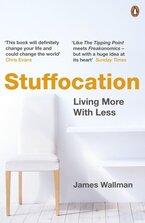 When you talk about decluttering, minimizing, organizing, or even just tidying up, you likely speak in subjective terms. "I prefer that over there" or "I feel overwhelmed by how much I own." Organizing as it relates to the maintenance of a home or lifestyle is considered a soft science, if a science at all. When we think of research our minds often go to the covers of housekeeping magazines or pretty pinterest boards. Rarely do we consider the science behind our stuff-- not just where we ought to keep it but why it exists at all (and why we felt so compelled to purchase it). And those books and articles that claim to have the solution to this stuff often rely on anecdotal evidence to support a philosophy that, at the end of the day, may work for a collection of individuals but is unlikely to become the prevailing way of life for society as a whole. Books I've reviewed on this very blog have waxed poetic on the virtue of minimalism and its superiority over consumerism without a single page dedicated to the reality of how consumerism came to be the prevailing mode of thought in developed nations. Going into Jame's Wallman's Stuffocation, it was apparent from the first page that is not the typical knee-jerk reaction to materialism. Instead, I found a comprehensive history of consumer culture and post-consumerism with psychological, sociological, and economic inquiry into how we came to this point of over-saturation, and how, with reliable methods of forecasting, we can predict society's future relationship with owning too much stuff. Stuffocation touches on the invention of materialism in 1920's and 30's America, and explores the reactive trends of minimalism, elective simplicity, and relaxed ambitions. What was incredibly refreshing about Wallman's take on these modern trends was his ability to explore their values without coming to the automatic assumption that they are solutions to stuffocation by virtue of being its direct opposite. Rather, he admits to our human need to display social health, and extols the value of objects without conflating that with a value on materialism and over-consumption. Wallman makes realistic predictions about future trends regarding human consumption and the switch from objects to experiences. These predictions are supported not by anecdotes, or the oft-made error of confusing correlation for causation, but tried-and-true scientific methods of predicting social trends. Wallman foresees a society in where we see "experience as a substitute for stuff, not shedding completely our need for external fulfillment but finding a better source. Not a reaction to materialism but an entirely different way of thinking that doesn’t involve materialism at all." While Stuffocation rejects many of the trends we previously saw as potential solutions, it does so in a way that reminds us that we can make a change not simply by reacting, but evolving, and creates a hopeful and realistic vision of our future relationship with stuff. 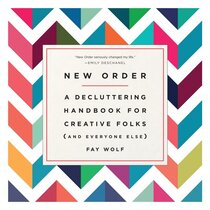 The first time I heard of Fay Wolf, she was speaking at a conference for entrepreneurs about the importance of organization for creative flow. This spoke to me as an artist, and when I rediscovered her while browsing through organizational books at the library, I was excited to see a print guide to her method of professional organizing for creative types. While New Order does stress the importance of decluttering your physical space, it comes into its own as a guide to managing time, tasks, workflow, information, and stress. Entrepreneurs and artists who find themselves constantly overwhelmed by their workload, the possibilities of the future, and the roadblocks preventing them from achieving their goals will likely benefit from the step by step strategies and systems introduced by Wolf. Wolf also succeeds in teaching an organized and effective approach to collaborating with others, which is key for decluttering your mind and working more efficiently. If you're secure in your ability to declutter your space, but not yet experiencing a clear and uncluttered mind, New Order is a fantastic tutor to bring you to a better mindset.  Fumio Sasaki has succeeded in reaching a degree of minimalism that most could not dream of reaching (nor would they truly want to). He has done this in every area of his life, perhaps, except for his writing. Though moments of clarity and relevance are able to push through in the otherwise ironically cluttered book, if this serves as your introduction to minimalism, you are equally as likely to reject the philosophy as embrace it. Sasaki's main point, that owning too much prevents us from living happy, fulfilled lives, gets lost in the repetitive anecdotes and the extreme lengths to which minimalism is taken by the author (he has discarded bath towels and a bed for a single hand towel and folding mattress). Though this book is highly praised by many already living the minimalist lifestyle, it could easily scare off those just beginning their journey. Sasaki does provide concrete steps to decluttering, many of which are useful, and if we are to truly engage with the minimalist philosophy he promotes, we can boil the best parts of the book down into a short list:
Goodbye, Things may be an excellent resource if you're interested in the ultra-minimalist lifestyle, or if you're simply looking for an extreme portrait of decluttering, but if you are just inching towards the idea of minimalism, it is perhaps not the place to begin your journey. 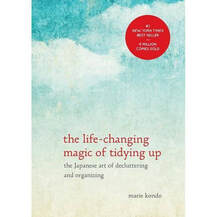 That's right, today we approach what many consider to be THE modern organization bible. And I will preface this review by admitting that I am a disciple of Marie Kondo's Konmari method. Her philosophy on how to interact with the things we own is what took me from an organizer to a declutterer, from someone who rearranged messes to someone who disposed of them completely. Kondo's approach to decluttering is polarizing-- many find it too strict, and the fact that it goes against our conventional organizing wisdom (cleaning room by room, having a "maybe" pile, waiting to make decisions until later) means that many professional organizers balk at the idea of introducing Konmari into their business practice. But for so many people who are organized or want to be organized, this book can expose why we haven't achieved our perfect tidiness. It allows us to acknowledge the bond we have with our belongings and utilize it to part with them in a way that respects that emotional attachment. And on top of the philosophical and anecdotal, Kondo introduces real, actionable steps that we can take not only to rid ourselves of the unnecessary or unwanted, but to properly order that which does serve a purpose or bring us joy. One of the key differences between Kondo's version of what could be called minimalism and minimalism in a traditional sense is that Kondo recognizes that items can bring us job, albeit not in the excess to which they tend to gather in our homes. Items that seemingly serve no purpose but make us happy are not automatically refuse-- because joy-giving is a purpose. Kondo's ability to weave practicality with the psychology of what makes us happy makes this book absolutely necessary reading for anyone who wants to feel joyful in their space. |
AuthorWrite something about yourself. No need to be fancy, just an overview. Archives
May 2018
Categories |
Proudly powered by Weebly

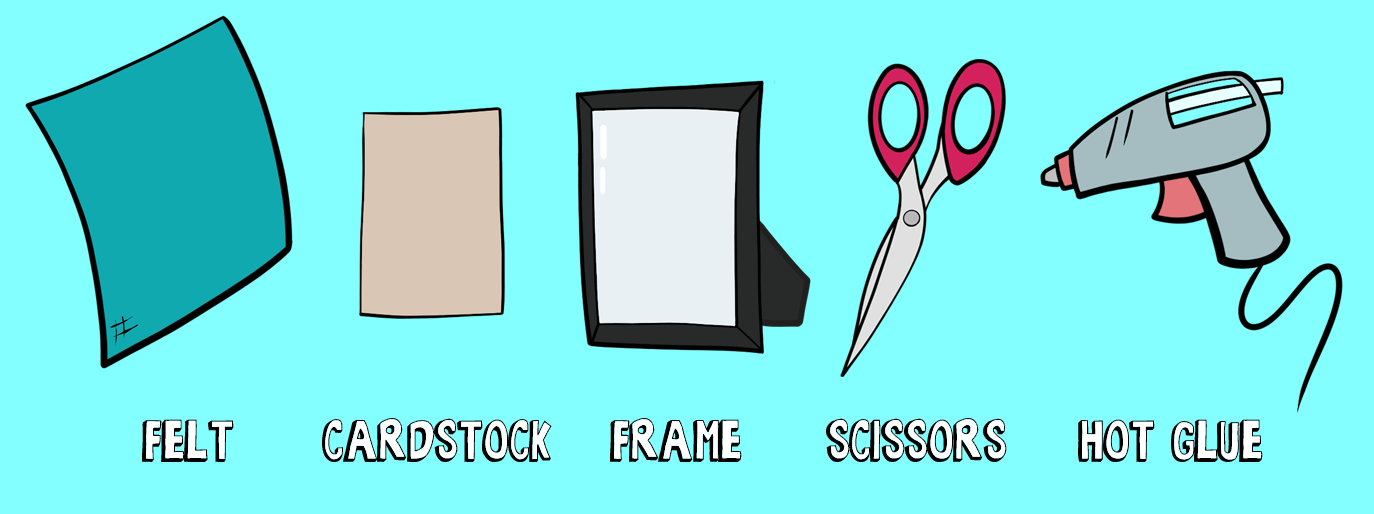
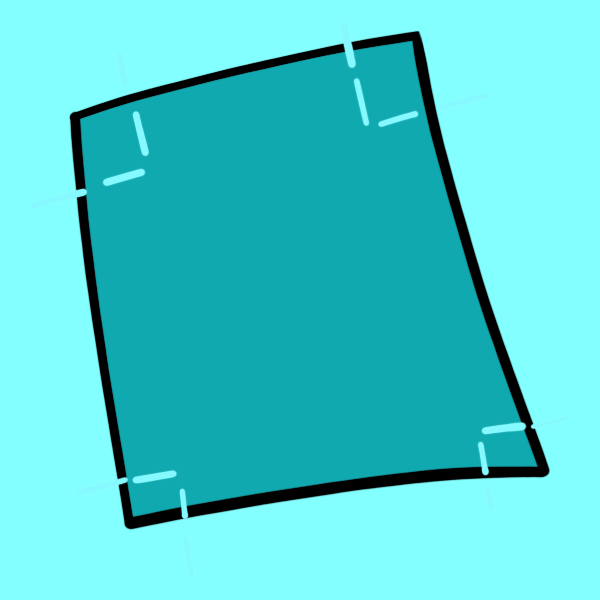
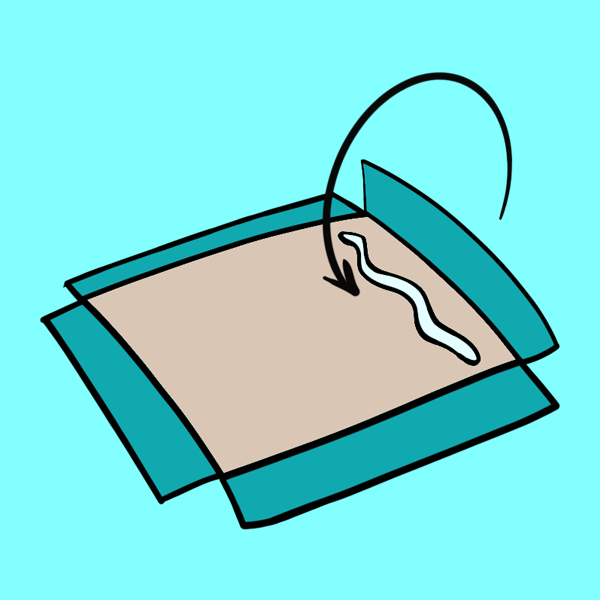
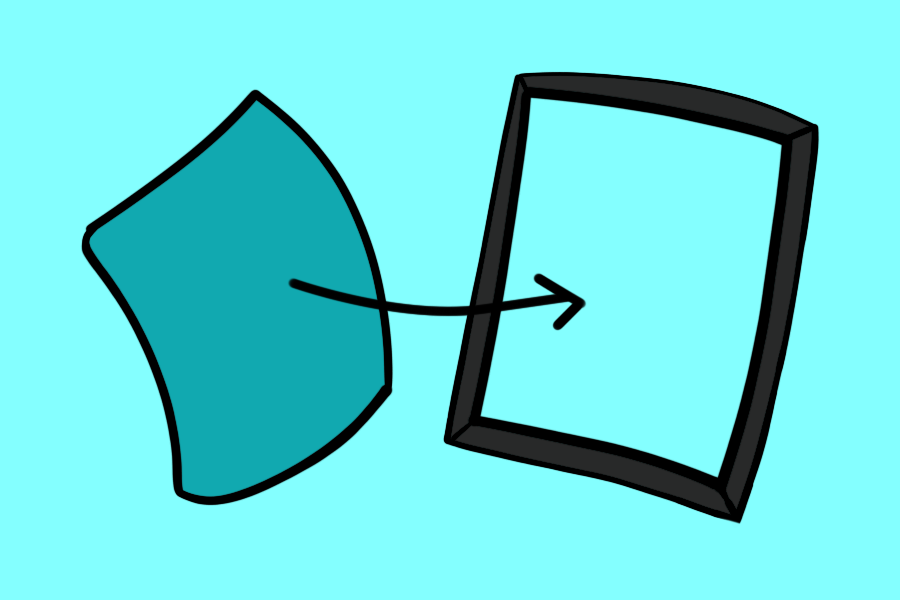

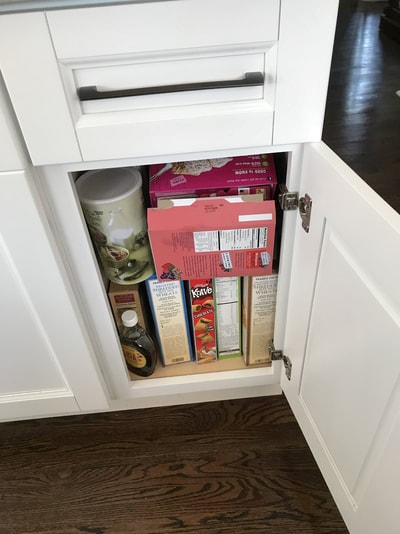


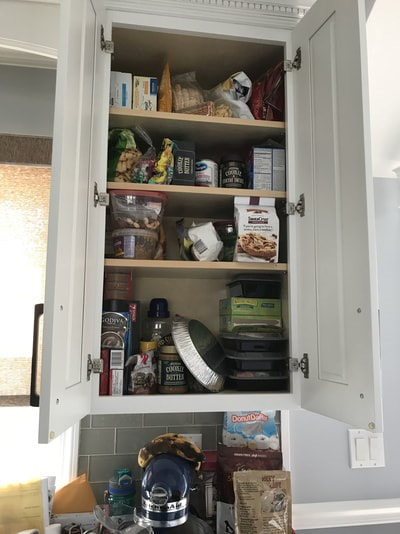
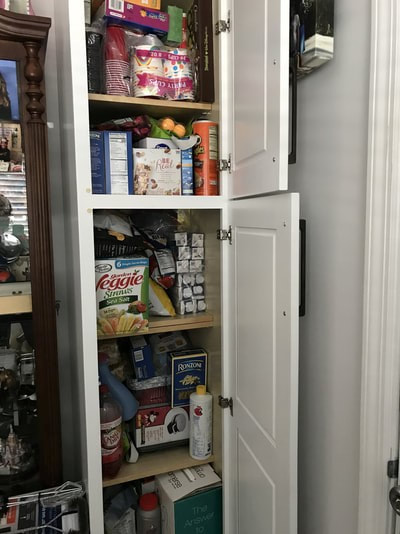







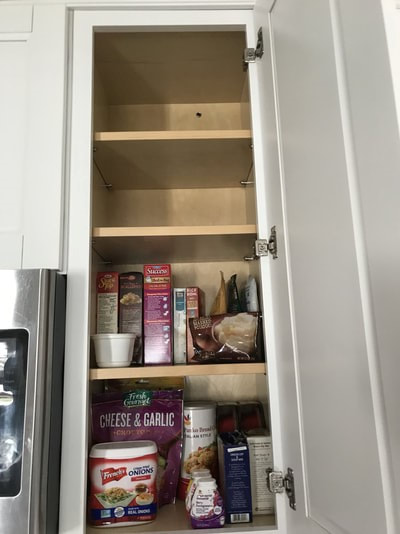

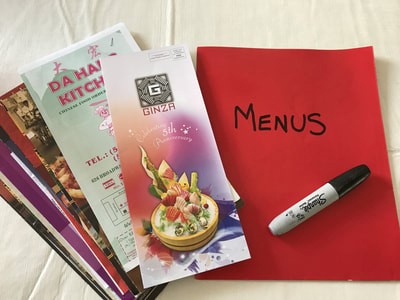


 RSS Feed
RSS Feed